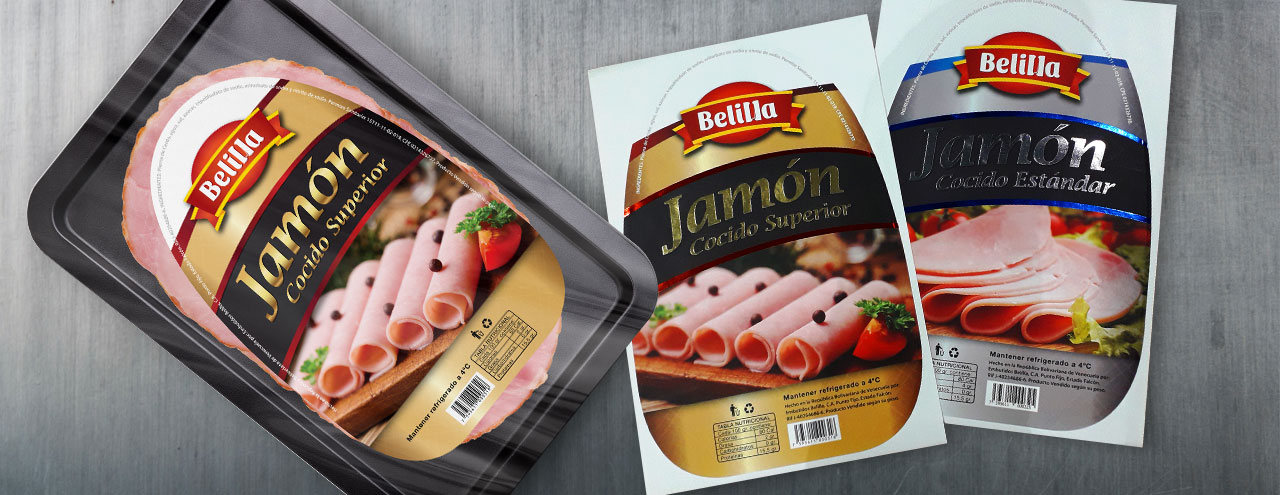There are people who cannot fully enjoy the traditional Easter, Christmas or Labor Day dinner without a delicious and nicely decorated ham on their dinner table. If they have a preferred ham brand and it’s on their regular weekly or monthly shopping list, they probably don’t spend time reading ham labels and checking out the competition. However, more and more consumers are interested in learning what is in their ham and other food products, and they make shopping choices based on information on food stickers.
Less informed consumers might ask: what is there to know about a piece of a pig’s hind leg? The answer is: plenty. One thing the consumers are curious about when they go shopping is the amount of calories in ham, so that’s a good reason to pay attention to ham nutrition labels. But they are also concerned about the quality and healthfulness of the meat product. From information about its preparation (curing, smoking, cooking), through details about the treatment of the pork (farm raised, no antibiotics and hormones used), to government agency seals that guarantee the product’s quality, there are many ways a label can help the consumer decide what to buy.
The Necessary Labeling Steps
If you want to draw more people to your ham product and increase sales, an important thing to focus on is information on food labels. Informative tags such as “Extra lean”, “Ready to eat”, “Honey cured”, “With natural juice”, “No nitrites added”, “No antibiotics used”, “Minimally processed” and similar are very powerful in showing transparency and assuring consumers that the product is of high quality.
You can’t fit all information you’d like on a label. Unfortunately, most people will never know the amount of time, effort and knowledge that was put into preparing a proper curing solution (salt, nitrite, maybe sugar and some additional ingredients) for injecting it into the meat, or the time put into dry-curing it, or smoking and cooking the ham. However, they’ll appreciate learning from the label if it’s “Uncured,” “Boiled”, “Fresh”, “Cooked”, and some more knowledgeable ham buyers will know the difference between country (dry-cured) and city (wet-cured) ham.
There are some things that the USDA demands of all ham producers (unless exempt from labeling) to include on their product packaging sticker:
- Product name
- Handling statement
- Inspection legend
- Net weight statement
- Ingredients statement
- Address line
- Nutrition facts
- Safe handling instructions
More information about these mandatory labeling rules can be found on the USDA website. Once these basic requirements are met, you can choose which additional pieces of information you want to include. Bear in mind that all additional claims need approval, because you cannot make claims unless they are truthful.
There are strict rules for every type of claim. For example, if you want to label your product “Natural”, it cannot have any hormones, artificial ingredients and it should be minimally processed. The tag “Fresh” cannot be used for cured or salted meat products, so it can only be used for uncured ham. If there is more than 50% of water added to your ham product, it needs to be labeled “Water and ham product”. There are also rules about how much grams a“Lean” ham can have, how much is present in “Extra-lean”, etc.
The labeling process is complicated and often strenuous, but when done right, the effort can be reflected in the number of new and repeat buyers.
Frozen Food Labels for Ham Product Packaging
Many people buy food in bulk, including ham, and freeze it for future occasions. Experienced food manufacturers know the difference between freezer proof labels and those that are made with a regular label adhesive. If you want to make sure that your ham labels are perfectly legible and firmly placed on the food packaging when kept in the freezer for as long as two months, contact the Freezer Label professionals for help. You’ll need to decide on the following label characteristics:
- What label shape and size is best suited for your product?
- How many stickers will you need?
- Would you like these labels to be printed on rolls or sheets?
- How many colors are featured on your label design?
- Would you like us to design your personalized labels?
We’ll discuss these and all other specific requirements of your label order to make sure that the labels you get are of the highest quality – just like your food product.

